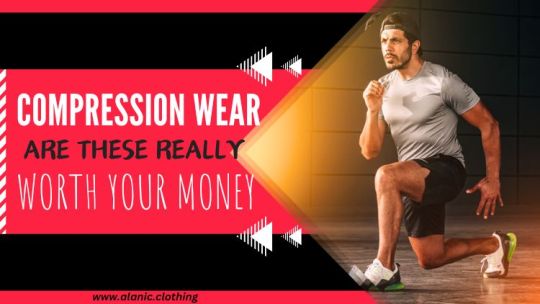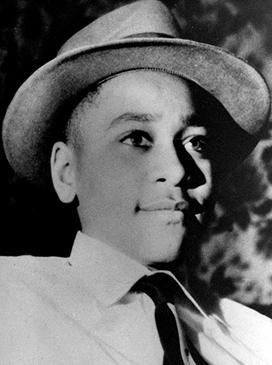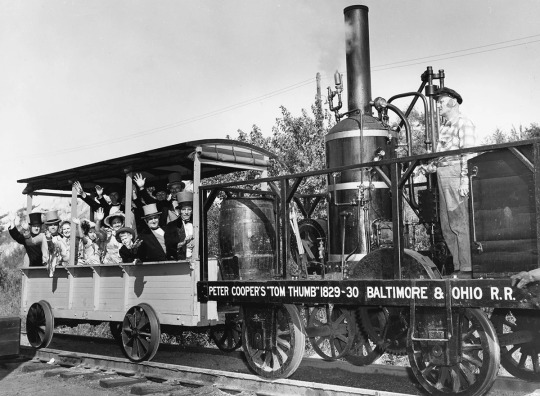#clothing manufacturers Chicago
Explore tagged Tumblr posts
Text

Alanic Global: Leading Wholesale Clothing Vendors in Chicago
Discover the finest wholesale clothing in Chicago, USA, with Alanic Global, offering a wide range of trendy and affordable fashion products.
#wholesale clothing vendors chicago#clothing manufacturers chicago#chicago wholesale clothing#wholesale clothing vendors in chicago#clothing manufacturers in chicago
0 notes
Text
Alanic Global: Top Wholesale Clothing Manufacturer in Chicago for Quality and Variety

Alanic Global, the leading wholesale clothing manufacturer in Chicago, offers top-quality and diverse apparel options to retailers, ensuring premium products for their customers. https://www.alanicglobal.com/usa-wholesale/chicago/
#chicago wholesale clothing vendors#clothing manufacturers chicago#chicago wholesale clothing#chicago manufacturer of apparel#wholesale clothing suppliers in chicago#best chicago wholesalers clothing#clothing vendors chicago#chicago#usa
0 notes
Text
All your clothing needs from private label clothing to fitness clothing will end here. Login now for exciting wholesale rates from the top manufacturer or customized clothing in USA.

#wholesale clothing manufacturers in usa#dallas clothing manufacturers#clothing manufacturers dallas#wholesale clothing chicago#wholesale clothing vendors miami#clothing manufacturers chicago#clothing manufacturers in chicago#manufacturer wholesale clothing
0 notes
Text

Rules To Wear High-Slit Dresses
To learn how you can carry high-cut dresses to appear taller, hotter and slimmer. Read the blog now
#clothing manufacturers in Las Vegas#clothing manufacturers in Chicago#slit dresses#Clothing Manufacturers Chicago#Clothing Manufacturers In Las Vegas#High-Slit Dresses
0 notes
Photo

How To Update Your Child's Clothing Without Leaving The House
Make your child's wardrobe more stylish with these tips and tricks mentioned in this blog!
#clothing manufacturers Chicago#kids boutique wholesale#kids clothes manufacturers#unbranded gym clothing wholesale
0 notes
Photo

4 ALL-TIME TRENDING V-DAY DRESSES PERFECT FOR THE DATE NIGHTS
Here are 4 all-time best valentine's party dress suggestions so you can impress your lover. Check now!!
#chicago clothing manufacturers#wholesale clothing suppliers london#wholesale clothing london#custom clothing manufacturers in london#clothing manufacturers Chicago
0 notes
Text

The Ideal Yoga Bra: A Harmonious Blend of Support, Comfort, and Style
A harmonious blend of style and functionality, the perfect yoga bra provides ample support without sacrificing comfort. Its breathable materials and flattering design make it ideal for both intense sessions and casual wear. https://www.bloglovin.com/@alanicglobal/ideal-yoga-bra-a-harmonious-blend-support
0 notes
Text

Top 5 Things to Keep in Mind as You Buy Baseball Jerseys
Ensure proper fit for optimal performance and freedom of movement. https://www.alanicglobal.com/blog/top-5-things-to-keep-in-mind-as-you-buy-baseball-jerseys/
#clothing manufacturers in Las Vegas#wholesale clothing vendors Chicago#baseball uniform manufacturers#baseball clothing supplier
0 notes
Text

Get game-ready with our wholesale clothing vendors chicago! Discover a wide range of high-quality, stylish garments designed for comfort and performance on the court. Elevate your fashion wardrobe today.
#chicago wholesale clothing manufacturers#wholesale clothing suppliers chicago#clothing manufacturers in chicago
0 notes
Text
Located in Chicago, IL, USA Clothing Manufacturer provides high-quality wholesale and private label clothing solutions for clients all around the world. Shop with the trusted USA clothing manufacturer and save on bulk orders for workout clothes. USACM offers premium quality and fast shipping. Take a look at our selection now!
#clothing manufacturers Chicago in USA#usa clothing manufacturers#usa apparel manufacturers#clothing manufacters#usa private label clothing manufacturers#clothing manufacturers united states#american clothes manufacturers#Apparel Manufacturer Chicago in USA#Chicago Wholesale Clothing Manufacturer#clothing manufacturers in alabama#clothing line manufacturers usa#dress shirt manufacturers in usa
0 notes
Text

1937, World's Highest Standard of Living :: Margaret Bourke-White
* * * *
LETTERS FROM AN AMERICAN
October 28, 2024
Heather Cox Richardson
Oct 29, 2024
On Monday, October 28, 1929, New York’s Metropolitan Opera Company opened its forty-fifth season.
Four thousand attendees in their finest clothes strolled to the elegant building on foot or traveled in one of a thousand limousines to see Puccini’s Manon Lescaut, the melodramatic story of an innocent French girl seduced by wealth, whose reluctance to leave her riches for true love leads to her arrest and tragic death. Photographers captured images of the era’s social celebrities as they arrived at opening night, their flash bulbs blinding the crowd that had gathered to see the famous faces and expensive gowns.
No one toasting the beginning of the opera season that night knew they were marking the end of an era.
At ten o’clock the next morning, when the opening gong sounded in the great hall of the New York Stock Exchange, men began to unload their stocks. So fast did trading go that by the end of the day, the ticker recording transactions ran two and a half hours late. When the final tally could be read, it showed that an extraordinary 16,410,030 shares had traded hands, and the market had lost $14 billion. The market had been uneasy for weeks before the twenty-ninth, but Black Tuesday began a slide that seemingly would not end. By mid-November the industrial average was half of what it had been in September. The economic boom that had fueled the Roaring Twenties was over.
Once the bottom fell out of the stock market, the economy ground down. Manufacturing output dropped to levels lower than those of 1913. The production of pig iron fell to what it had been in the 1890s. Foreign trade dropped by $7 billion, down to just $3 billion. The price of wheat fell from $1.05 a bushel to 39 cents; corn dropped from 81 to 33 cents; cotton fell from 17 to 6 cents a pound. Prices dropped so low that selling crops meant taking a loss, so struggling farmers simply let them rot in the fields.
By 1932, over one million people in New York City were unemployed. By 1933 the number of unemployed across the nation rose to 13 million people—one out of every four American workers. Unable to afford rent or pay mortgages, people lived in shelters made of packing boxes.
No one knew how to combat the Great Depression, but certain wealthy Americans were sure they knew what had caused it. The problem, they said, was that poor Americans refused to work hard enough and were draining the economy. They must be forced to take less. “Liquidate labor, liquidate stocks, liquidate the farmers, liquidate real estate,” Treasury Secretary Andrew Mellon told President Herbert Hoover. “It will purge the rottenness out of the system. High costs of living and high living will come down. People will work harder, live a more moral life. Values will be adjusted, and enterprising people will pick up the wrecks from less competent people.”
Slash government spending, agreed the Chicago Tribune: lay off teachers and government workers, and demand that those who remain accept lower wages. Richard Whitney, a former president of the Stock Exchange, told the Senate that the only way to restart the economy was to cut government salaries and veterans’ benefits (although he told them that his own salary—which at sixty thousand dollars was six times higher than theirs—was “very little” and couldn’t be reduced).
President Hoover knew little about finances, let alone how to fix an economic crisis of global proportions. He tried to reverse the economic slide by cutting taxes and reassuring Americans that “the fundamental business of the country, that is, production and distribution of commodities, is on a sound and prosperous basis.”
But taxes were already so low that most folks would see only a few extra dollars a year from the cuts, and the fundamental business of the country was not, in fact, sound. When suffering Americans begged for public works programs to provide jobs, Hoover insisted that such programs were a “soak the rich” program that would “enslave” taxpayers, and called instead for private charity.
By the time Hoover’s term ended, Americans were ready to try a new approach to economic recovery. They refused to reelect Hoover and turned instead to New York Governor Franklin Delano Roosevelt, who promised to use the federal government to provide jobs and a safety net to enable Americans to weather hard times. He promised the American people a “New Deal”: a government that would work for everyone, not just for the wealthy and well connected.
As soon as Roosevelt was in office, Democrats began to pass laws protecting workers’ rights, providing government jobs, regulating business and banking, and beginning to chip away at the racial segregation of the American South. New Deal policies employed more than 8.5 million people, built more than 650,000 miles of highways, built or repaired more than 120,000 bridges, and put up more than 125,000 buildings.
They regulated banking and the stock market and gave workers the right to bargain collectively. They established minimum wages and maximum hours for work. They provided a basic social safety net and regulated food and drug safety. And when World War II broke out, the new system enabled the United States to defend democracy successfully against fascists both at home—where they had grown strong enough to turn out almost 20,000 people to a rally at Madison Square Garden in 1939—and abroad.
The New Deal worked so well that common men and women across the country hailed FDR as their leader, electing him an unprecedented four times. Republican Dwight D. Eisenhower built on the New Deal when voters elected him in 1952. He bolstered the nation’s infrastructure with the Federal-Aid Highway Act, which provided $25 billion to build 41,000 miles of highway across the country; added the Department of Health, Education, and Welfare to the government and called for a national healthcare system.
Eisenhower nominated former Republican governor of California Earl Warren as chief justice of the Supreme Court to protect civil rights, which he would begin to do with the 1954 Brown v. Board of Education decision months after joining the court. Eisenhower also insisted on the vital importance of the North Atlantic Treaty Organization (NATO) to stop the Soviet Union from spreading communism throughout Europe.
Eisenhower called his vision “a middle way between untrammeled freedom of the individual and the demands of the welfare of the whole Nation.”
The system worked: between 1945 and 1960 the nation’s gross national product (GNP) jumped by 250%, from $200 billion to $500 billion. The vast majority of Americans of both parties liked the new system that had helped the nation to recover from the Depression and to equip the Allies to win World War II.
Politicians and commentators agreed that most Democrats and Republicans shared a “liberal consensus” that the government should regulate business, provide for basic social welfare, promote infrastructure, and protect civil rights. It seemed the country had finally created a government that best reflected democratic values.
Indeed, that liberal consensus seemed so universal that the only place to find opposition was in entertainment. Popular radio comedian Fred Allen’s show included a caricature, Senator Beauregard Claghorn, a southern blowhard who pontificated, harrumphed, and took his reflexive hatred of the North to ridiculous extremes. A buffoon who represented the past, the Claghorn character was such a success that he starred in his own Hollywood film and later became the basis for the Looney Tunes cartoon rooster Foghorn Leghorn.
LETTERS FROM AN AMERICAN
HEATHER COX RICHARDSON
#Heather Cox Richardson#Letters From An American#the great depression#American History#FDR#economic justice#economic equality#the 20th century#liberal consensus#Government for the people#Margaret Bourke-White
16 notes
·
View notes
Text
AU Tag Game 🥂
i was tagged by @creepkinginc, @metalheadmickey, @energievie, and @deathclassic to participate in this fun writing exercise/tag game! here we goooooo!
rules: use this au generator to assign you an au, this fan fiction trope generator to give you a trope/situation/sometimes another au, feel free to keep clicking until you get something that inspires you.
then try to come up with the title, plot, vibe, and details of a fic including whatever the generators gave you. you don’t actually have to write it, just put the concept into the world! this is basically just a thought experiment.
au generator gave me: Prohibition Era AU
fic trope generator gave me: Make one cradle the other’s face.
title: The Great Gallagher
let’s plot:
Chicago, 1929.
Mickey Milkovich is a bootlegger from the South Side. Working under his father, a terrifying man with a fearsome reputation, Mickey provides liquor to the North Side’s fanciest speakeasies and wealthiest clientele.
Ian Gallagher is a rich Northsider, self-made through a myriad of illegal, alcohol-adjacent ventures. The Chicago police are beginning to bear down on him but it doesn’t really matter – his money and connections keep him safe.
When his normal distributor is killed in a car crash and his business dissolved, Ian must find another provider to stock his cabinets for his many wild, raucous parties.
Enter Mickey.
Their first meeting is at a cafe. Completely innocuous, the two men share lunch and discuss their arrangements. I ain’t gettin’ caught doin’ some stupid shit just ‘cause you like to party / Don’t worry Mr. Milkovich, I assure you that won’t happen. They leave the cafe with a deal in hand: Mickey will provide Ian with all the alcohol his heart desires and in exchange, Ian will provide Mickey with the best connections in the business – manufacturers, chemists, speakeasy owners, and the like. The deal is good. Infallible, even.
Until it’s not.
After a few months of doing business together, mostly through Ian’s many lackeys, Mickey’s father’s house is raided and the entire family is taken in. Fortunately for him, Mickey was down at the South Shore docks, smoking and having one of his classic existential crises, when the cops came crashing through his doors.
Arriving back home to an empty house, broken windows, and obvious signs of a raid, Mickey is lost. Never before has he been without his family and, despite the relief of his abusive father’s absence, he’s terrified of what the raid means for his siblings and his future. With no friends outside of their team, all of whom are in jail, Mickey doesn’t know who to turn to.
And somehow, he ends up at Ian’s.
The guy’s got money and connections, he tells himself. He can help me figure this out. Help spring Mandy, Iggy, and Colin from the joint. The four of them can revamp the business, make it safer, quieter, more efficient than it was under his father’s rule. Ian can help with that. Of course he can.
It’s late when he arrives. Ian opens the door to a rain-soaked Mickey and invites him inside, offering him a towel, a change of clothes, and a place to sleep. Once Mickey’s dried off and fitted with one of Ian’s giant sleep shirts and too-large pajama pants, the two men sit in Ian’s study with glasses of whiskey and a strange, growing tension between the two of them. After all, Mickey had just run to Ian in the rain, turning to him in his time of need.
That has to mean something, right?
They talk. Mickey tells him everything. About the business, his father, his siblings, the raid, all of it. Ian sits, and he listens, and he takes it all in without offering up any opinions or thoughts. Just listening. Just letting Mickey speak.
When Mickey stops talking, he hates himself. Why did he share all of that with someone that’s basically a stranger? They’re business associates, not friends. He doesn’t have any friends, and that’s for good reason. The less invested you are, the easier it is to move through the world with your own best interests in mind.
I’m sorry, Ian offers, sympathetic look plastered on his face. And for some reason, that makes something inside of Mickey break. Nobody’s ever apologized to him before. Not for his circumstances, not for hurting him, not for anything. His hardened persona, egged on by his father’s abuse, has made him impervious to emotion. So why did his brain and body choose now to break down?
Mickey cries. He covers his face in his hands and he cries, exhausted from life, exhausted from running, exhausted from the stress of worrying about his siblings being locked up in a cold, damp, terrifying place. Ian sets down his drink and gets up, walking over to Mickey and kneeling before him.
“It’s going to be okay,” he promises. “I’m going to help you. We’ll get them out.”
“How can you be so sure?”
“I just know. I’ve done this before. Sprung people. You’d be shocked how many dirty cops there are in Chicago. Hell, half the police force are regulars at my parties. I’ve seen the Captain down at Jerry’s Speakeasy on more than one occasion. It won’t be hard to convince them to let your family go.”
Mickey sighs deeply. Wipes his eyes. Looks down at Ian, who reaches up, cradling his face. He wipes a single tear away with his thumb, stroking Mickey’s cheek so softly, so gently, Mickey doesn’t know what to do.
Time ticks. The tension of the moment builds. Then suddenly, Ian surges forward in a leap of faith and kisses Mickey, hard and frantic, desperate and aching. Mickey kisses him back, lips and fingertips sparking, his body lit up by the contact.
They kiss and they touch and the next thing you know, Mickey’s shirt is being pulled over his head and Ian is shrugging out of his slacks and the two men fall together, naked, in a tangled heap on the rug.
The sex is electric. The release is explosive, like fireworks on New Year’s Eve. A new beginning, full of promise and potential.
They lie there afterwards, catching their breath, in disbelief of what just happened. But not regretful. No, not regretful.
“Wow,” Ian breathes.
“Yeah,” Mickey replies. Then it’s silent, save for their soft breathing.
Ian turns to look at Mickey, returning his own euphoric grin.
“Wanna go again?” he asks, unable to mask the hope in his voice.
Mickey’s grin turns into a smirk.
“Absolutely.”
**
not tagging anyone because i’m suuuuuuuper late to the game on this one but if you want to participate, consider yourself tagged! 💛
#i will not lie to y'all#even though i kinda just wrote it#i kinda wanna write it#uh ohhhhh spaghetti-ooooo#tag games#*macywords
22 notes
·
View notes
Text
Chicago Premier Clothing Manufacturers

A Renowned Chicago Brand Providing Premium Clothing Manufacturing Services. From Design to Production, We Deliver Top-Notch Garments, Fusing Quality Craftsmanship and Stylish Designs to Elevate Your Brand's Success. https://www.alanicglobal.com/usa-wholesale/chicago/
#clothing manufacturers chicago#wholesale clothing manufacturers chicago#clothing manufacturers in chicago#clothing manufacture chicago#chicago wholesale clothing suppliers#wholesale clothing vendors chicago#chicago#usa
0 notes
Text
Wholesale Clothing – Chicago Your search for best in class wholesale clothing in Chicago is finally come to an end here! We, at Alanic Global, If you want to place bulk order of wholesale clothing and looking for a wholesale clothing in Chicago, stop by Alanic Global, the top clothing manufacturer.

#wholesale clothing vendors chicago#clothing manufacturers chicago#clothing manufacturers in chicago#wholesale clothing manufacturer#manufacturer wholesale clothing#wholesale clothing chicago
0 notes
Text
Want to know whether compression wear is really worth your money? Whether it really works or not? Read now!
Blog Link: https://alanicclothing.blogspot.com/2024/03/is-compression-wear-really-worth-your-money.html

#chicago clothing manufacturers#chicago wholesale clothing#chicago wholesale clothing market#clothing vendors chicago#jackson clothing brand#wholesale clothing Chicago
0 notes
Text
History Daily: August 28

Image: Emmett Till (Wikimedia Commons)
On August 28, 1955, while visiting family in Money, Mississippi, 14-year-old Emmett Till, an African American boy from Chicago, is viciously murdered for allegedly flirting with a white woman four days earlier.
His murderers—the white woman’s husband and his brother—made Emmett carry a 75-pound cotton gin fan to the bank of the Tallahatchie River and ordered him to take off his clothes. The two men then beat him nearly to death, gouged out his eye, shot him in the head, and then threw his body, tied to the cotton gin fan with barbed wire, into the river.
Three days later, his body was recovered but was so disfigured that he could only identify it by an initialed ring. Authorities wanted to bury the body quickly, but Till’s mother, Mamie Bradley, requested it be sent back to Chicago.
After seeing the mutilated remains, she decided to have an open-casket funeral so that all the world could see what racist murderers had done to her only son. Jet, an African-American magazine, published a photo of Emmett’s corpse, and soon the mainstream media picked up on the story.
Less than two weeks after Emmett’s body was buried, Milam and Bryant, the two murderers, went on trial in a segregated courthouse in Sumner, Mississippi. There were few witnesses besides Mose Wright, who positively identified the defendants as Emmett’s killers.
On September 23, the all-white jury deliberated for less than an hour before issuing a verdict of “not guilty,” explaining that they believed the state had failed to prove the identity of the body. Many people around the country were furious by the decision and by the state’s decision not to indict Milam and Bryant on the separate charge of kidnapping.
The Emmett Till murder trial brought to light the brutality of Jim Crow segregation in the South and was an early impetus of the civil rights movement.
HORSE RACES A TRAIN

Image: Passengers enjoy their ride in a carriage pulled by the replica Tom Thumb.
Roaring, hissing, growling, clanking, the locomotives of the steam era not only resembled great beasts but were given names to match their status: Big Boys that hurled freight across the craggy American landscape; the UK’s Flying Scotsman; and the Fairy Queen, which still occasionally travels the tracks between New Delhi and Alwar in India.
But none of this was of great concern to no-nonsense Peter Cooper, the inventor and industrialist who designed and built the first American steam locomotive. He called it . . . Tom Thumb.
On August 28, 1830, Cooper accepted a challenge to prove that his mechanical power was greater than horsepower.
Until this point in time, rail companies in America, such as the Baltimore & Ohio Railroad (B&O) relied on horses to pull their passenger and freight trains, even though steam locomotives were used elsewhere in the world.
But that tradition was about to end when B&O directors were given a ride aboard Tom Thumb from Baltimore to Ellicott Mills, Maryland (now Ellicott City). They were amazed that the locomotive could achieve speeds of 10-14 miles per hour.
Then, according to legend, Tom Thumb took part in a famous race with a horse-drawn car while returning from a trip to Ellicott Mills. The locomotive was well ahead of the horse-drawn car until a mechanical fault caused the engine to lose steam, and the horse reached the finishing line first.
The event is a staple of American folklore though there is no documentation to substantiate it. Nevertheless, B&O was clearly impressed with Tom Thumb and ran this notice in newspapers:
The Baltimore and Ohio Rail Road Company being desirous of obtaining a supply of locomotive steam engines of American manufacture, adapted to their road, have given public notice that they will pay the sum of Four Thousand Dollars (equivalent to $136,000 in 2022 dollars) for the most approved engine which shall be delivered for trial upon the road on or before the first of June, 1831.
Although Tom Thumb is known as the first successful American steam locomotive, hauling passengers until at least March 1831, it was never put into regular service.
But a replica was built in 1927 for the B&O Railroad Museum and still runs today. The locomotive appeared on a US postage stamp in 1952.
GERMANY GETS READY TO INVADE POLAND
August 28, 1939. Journalist Care Hollingworth observes the “large numbers of troops, literally hundreds of tanks, armored cars and field guns” Germany had aligned along the Polish border. Three days later, Hitler invades Poland and WWII begins.

Image: Left to right, top to bottom: Luftwaffe bombers over Poland; Schleswig-Holstein attacking the Westerplatte; Danzig Police destroying the Polish border post; German tank and armored car formation; German and Soviet troops shaking hands; bombing of Warsaw. (Wikimedia Commons.)
#history daily#american history#world war 2#history#crime & punishment#1800s#trains#1950s#Emmett Till#civil rights movement#Lynching#Poland#Adolf Hitler#1930s
4 notes
·
View notes